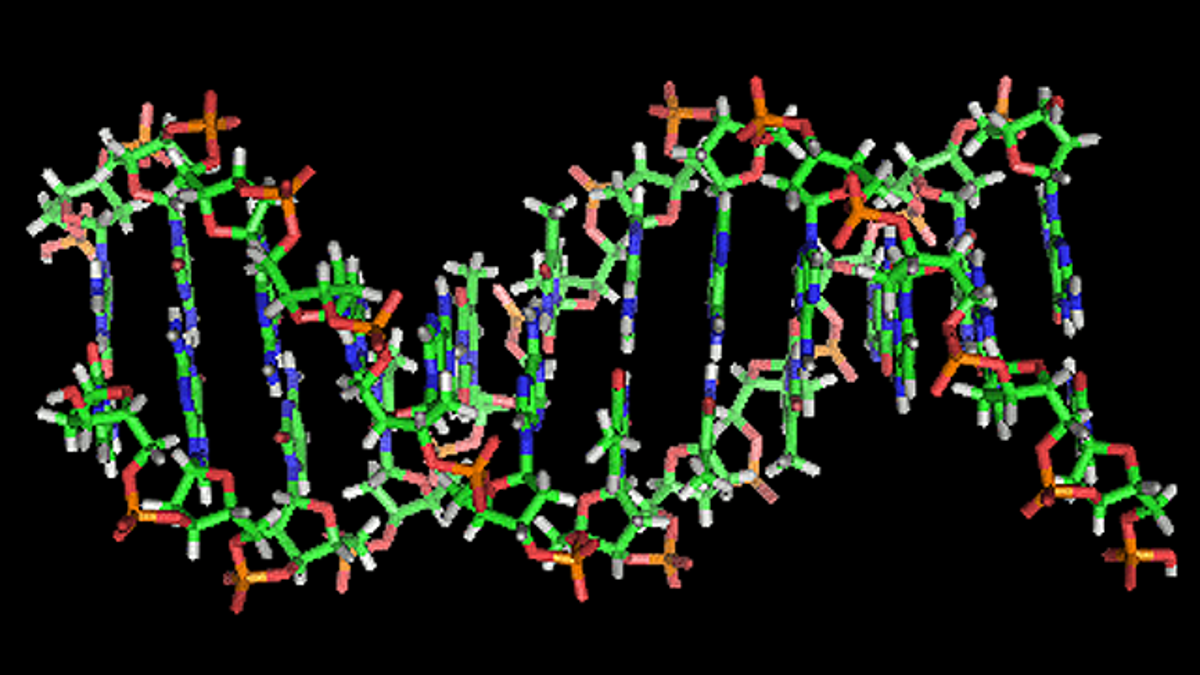
An illustration of the double-helix structure of a strand of DNA. (Wikipedia)
Scientists have made significant advances in the quest to treat mitochondrial disease, an incurable genetic malady that afflicts thousands of U.S. children each year.
In experiments reported Wednesday in the journal Nature, researchers used two cutting-edge laboratory techniques—cloning and cell reprogramming—to make fresh tissue that was a perfect genetic match for patients suffering from the disorder.
“In the future we’d like to replace diseased tissue with healthy tissue” in such patients, said Shoukhrat Mitalipov, development biologist at Oregon Health and Science University in Portland, Ore., and a lead author of the study. “That’s the work ahead of us.”
Mitochondria are tiny structures inside cells that act as batteries, converting carbohydrates and fats into energy. When genetic mutations disrupt this process, it can trigger a range of ailments, including deafness, diabetes, heart disease and dementia. In the U.S., the disorder is believed to affect one in every 5,000 to 10,000 live births.
Mitochondrial DNA contains only 37 genes, but scientists have found it very difficult to manipulate them. Experiments to treat mitochondrial disorders with traditional gene therapy—swapping defective genes with healthy ones—for example, have borne no fruit.
Dr. Mitalipov’s team embarked on two different approaches. One, using cell reprogramming, was aimed at patients who have only some—say, 30% to 40%—of their mitochondrial genes mutated.
A patient’s diseased skin cells were first treated with a cocktail of genes, a technique known as cell reprogramming. That transformed the mature skin cells into embryonic-like ones. The scientists noticed that one or two of those embryonic-like cell lines had spontaneously lost their mutations.
